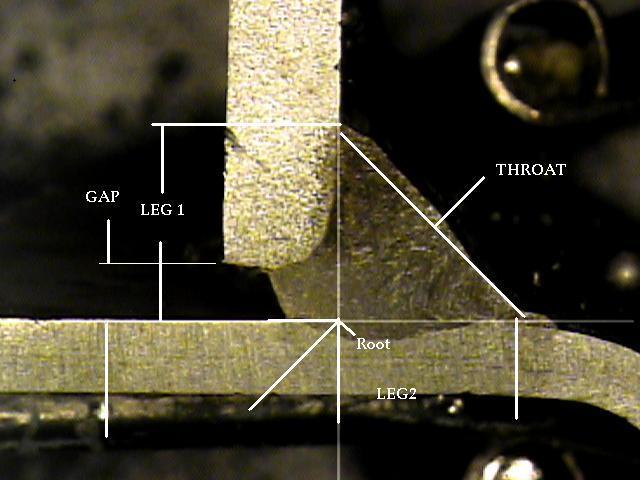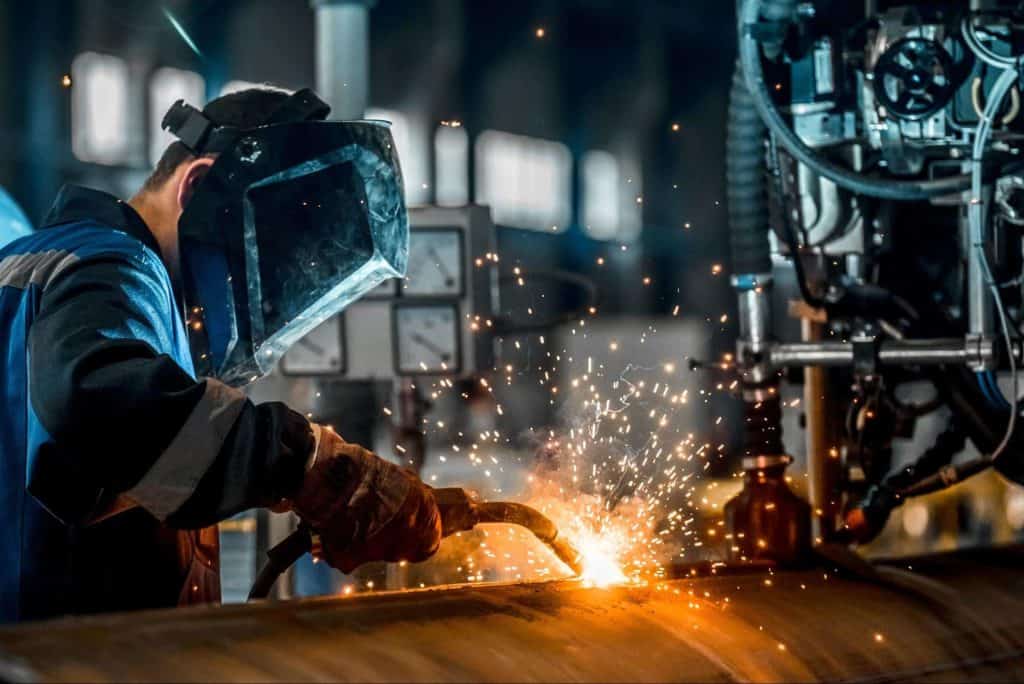Usual Challenges in Welding Inspection Madison and How to Overcome Them
Usual Challenges in Welding Inspection Madison and How to Overcome Them
Blog Article
Comprehending the Basics of Welding Assessment to Make Sure High Quality and Security
In the realm of modern design, welding examination stands as a keystone for ensuring both the top quality and security of architectural developments. What are the subtleties of these evaluation approaches that make them important for keeping structural stability?

Relevance of Welding Evaluation
In the world of commercial fabrication, the significance of welding evaluation can not be overemphasized. Welding examination plays a critical role in guaranteeing the stability, safety and security, and longevity of welded frameworks. Offered the varied applications of welding in sectors such as building and construction, auto, aerospace, and shipbuilding, the demand for stringent quality control measures is paramount. Correct inspection ensures that welds meet specified criteria and codes, which is crucial for protecting against architectural failures that could lead to catastrophic effects.
The procedure of welding inherently includes complex variables, consisting of temperature level, material homes, and environmental problems, all of which can affect the high quality of the weld. A thorough examination determines problems such as splits, porosity, and incomplete fusion, which can jeopardize the strength and integrity of the weld. By finding these concerns early, restorative actions can be taken, consequently decreasing the threat of failure and linked costs.
In addition, welding evaluation adds to regulatory compliance, as several markets are controlled by stringent safety and security standards and standards. Failing to stick to these guidelines can result in legal responsibilities and financial charges. Ultimately, welding assessment not just safeguards physical structures however additionally upholds and secures human lives sector credibilities.

Key Welding Assessment Approaches
Although welding inspection is critical to ensuring the top quality and security of welded frameworks, it is the certain methods used that figure out the efficiency of the evaluation procedure. Secret welding evaluation approaches can be extensively categorized into non-destructive testing (NDT) and devastating testing.
Ultrasonic and radiographic screening are advanced strategies that enable assessors to assess the inner stability of the weld. Ultrasonic testing utilizes high-frequency acoustic waves to identify gaps, while radiographic testing utilizes X-rays or gamma rays to produce a picture of the weld's inside. Magnetic particle screening and liquid penetrant testing are surface area evaluation approaches utilized to find surface and near-surface flaws. On the other hand, destructive screening methods include literally reducing the weld or breaking to assess its mechanical buildings. These extensive examination methods guarantee that welds fulfill industry requirements and safety and security requirements, therefore guaranteeing architectural honesty and performance.
Role of Qualified Examiners
Licensed inspectors play a crucial role in the welding examination process, ensuring that all welds comply with rigid industry criteria and safety laws. Their competence is important in determining flaws or irregularities that might endanger the architectural stability of a weld. By meticulously taking a look at each weld, licensed inspectors aid prevent potential failures that can cause hazardous mishaps or costly repairs.
To come to be qualified, assessors have to go through rigorous training and screening, which acquaints them with different welding techniques, products, and testing methods. This comprehensive understanding allows them to evaluate weld top quality efficiently and make informed judgments concerning their security and reliability. In addition, licensed inspectors are skilled in interpreting requirements and blueprints, ensuring that the welding job aligns with the task's design requirements.
An integral part of their function is to record their searchings for extensively, giving a detailed record of the evaluation process. Their our website contribution is essential in preserving high degrees of high quality and security in welding procedures.

Devices Utilized in Welding Examination
Welding assessors count on a selection of specialized devices to do their duties successfully, guaranteeing each weld meets the necessary standards. Among these devices, visual evaluation help like multiplying glasses and mirrors are essential, enabling inspectors to very closely take a look at welds for surface issues such as splits, porosity, and undercut. Calipers and fillet weld evaluates are important for gauging weld dimensions to verify conformity with design requirements.
Advanced tools expand beyond aesthetic help, including non-destructive screening (NDT) equipment. Ultrasonic screening tools are essential in discovering subsurface flaws, making use of sound waves to disclose internal discontinuities without jeopardizing the weld's integrity. Likewise, radiographic testing uses X-rays or gamma rays to capture photos of a weld's inside, highlighting prospective flaws.
Magnetic bit testing is one more essential tool, specifically for spotting surface area and near-surface suspensions in ferromagnetic products. By using electromagnetic fields and ferrous bits, examiners can recognize flaws that might or else be unseen.
Dye penetrant evaluation is commonly made use of for non-ferrous materials, offering a contrast-enhanced aesthetic look for surface-breaking issues. Welding Inspection Madison. Together, these tools allow welding examiners to adequately assess weld quality, making sure safety and security and integrity in numerous applications across industries
Guaranteeing Structural Stability

Welding procedures have to abide by established criteria and codes, such as those specified by the American Welding Society (AWS) or the International Company for Standardization (ISO) These guidelines make certain that the welds can endure operational anxieties and environmental variables. Qualified and certified welders play a vital role in this procedure, as their knowledge ensures that methods are used properly, decreasing problems such as splits, porosity, and incomplete combination.
Post-weld inspection is one more essential element of validating structural stability. Non-destructive screening (NDT) methods, consisting of ultrasonic screening and radiographic testing, are utilized to identify subsurface defects without endangering the welded structure. These assessments confirm that the welds meet the needed top quality criteria, giving guarantee of their sturdiness and integrity. Inevitably, guaranteeing structural stability in welding not just safeguards human lives yet also safeguards financial investments and boosts the long life of crafted structures.
Final Thought
The basics of welding inspection are necessary for maintaining the top quality and safety and security of welded frameworks. The usage of specialized devices better boosts the assessment procedure, eventually guarding human lives and prolonging the life-span of welded buildings.
Welding evaluation plays an essential role in making certain the honesty, safety, and durability of welded structures.Although welding examination is essential to ensuring the high quality and safety of bonded structures, it is the specific techniques employed that figure out the performance of the examination process. Secret welding examination he said techniques can be extensively categorized right into non-destructive testing (NDT) and harmful testing.Licensed examiners play a critical duty in the welding evaluation procedure, making sure that all welds abide with rigorous market criteria and safety laws.The fundamentals of welding examination are essential for preserving the high quality and safety of welded frameworks.
Report this page